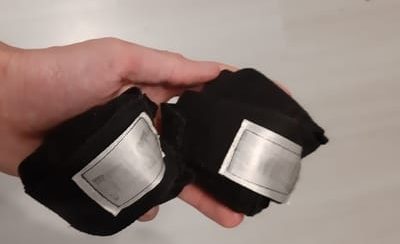
When it comes to the sweet science of boxing, there has always been a big debate among fighters and aficionados alike: Which exercise is superior, Shadowboxing or heavy bag work? And while It’s recommended that you do both exercises, I personally think that one exercise is better than the other.
Shadow Boxing vs Heavy Bag Work, which one is better? Shadow boxing is more effective as a general boxing exercise when compared to heavy bag work. This is because of several reasons. The first one is that you can practice your technique much more effectively than working the heavy bag. This is why pro boxers spend so much time shadowboxing in their daily routine. It helps the boxer perfect the form of his punches, and avoid bad habits, like not pulling their hands back after finishing the punch or telegraphing punches.
Another reason is that beginners tend to disregard form when using the heavy bag, especially if they do not have a coach or trainer nearby to help them. Improper use of the heavy bag will affect the boxer in all dimensions, especially in the balance department. Not saying that beginners shouldn’t use the heavy bag, but they need to use it the proper way to really reap the benefits of it.
So yes, heavy bag work has a lot of benefits, but it’s up to each and every boxer to really get something out of it. Below I talk in a little more detail about the other reasons why you should focus on shadowboxing over heavy bags, especially if you are new to this, and I also mention the benefits of quality heavy bag work.
Why Shadow Boxing is the Best Exercise
So as I said above, the main benefit of shadowboxing is the fact that it’s an excellent way to practice punching technique. 10 minutes of focused shadow boxing per day is going to be perfect for getting used to throwing punches, which might not feel very natural to the new trainee.
I would argue that shadow boxing and skipping rope are the only things that a new boxer should be doing the first weeks. Shadow boxing will create muscle memory which is what you most need to create a sense of comfort when moving around the ring.
Another big benefit of shadowboxing is the fact that it’s such a minimalist exercise. You don’t need any equipment to do it. I personally tend to shadow box in the evening a few hours after shadow boxing in the gym. Compare this with working with a heavy bag: You are obviously going to need the bag, gloves and hand wraps, gear that you may not have at your immediate access if you do not have a gym nearby.
Also, another big pro about shadowboxing is that it’s the ideal exercise for practicing combinations and new punches. For example, left hooks are notoriously awkward to first throw. Slowish shadowboxing will seriously help you throw it the proper way, and it will build the muscle memory necessary to use the punch more naturally and more forcefully. The same thing applies with uppercuts and more complex combinations.
And last but not least, shadow boxing will teach you something extremely important: a sense of balance. When shadowboxing, you don’t have any target in front of you. It’s just you and the air. This ensures that you do not over-commit to any punch and avoid throwing haymakers which can be seen a mile away. This is one of the main reasons why heavy bag can create so many problems.
Pros and Cons of Heavy Bag Work
But I don’t want you to believe that heavy bags are the devil or anything like that, just that it’s really easy to use them improperly. Quality heavy bag work has a lot of benefits, which I’ll talk below, and it definitely is an important part of any boxer’s training regime. Anyways, here one some of the benefits of heavy bag work.
- Great way to improve punching power: When it comes to muscle memory and initial technique, shadowboxing is the better choice, but when it comes to developing power and actually applying that punching technique to a target, the heavy bag reigns supreme.
Everybody knows how good the bag sounds when hit properly, and doing so on a consistent basis will really polish your punching skills. The power gained from regular heavy bag work will transfer to hard sparring sessions, making your punches more explosive, refining your sense of distance, and improving your punch flow.
- An excellent way to improve your cardio: One of the other benefits of using heavy bag is that it’s a tried-and-true way to improve your conditioning. Heavy bag drills on a gym tend to be between 3-5 minutes, depending on the coach, and you can easily gas yourself if you push it for that time frame. For the average trainee, the last minute is where the fatigue sets in.
This is when you most need to hit the gas and start throwing combinations on the bag. To really build up that resistance, many coaches advise their trainees to throw punches non stop at the bag for the last 30 seconds or so. Doing this every day for a few weeks will really make a difference in your cardio, especially when sparring.
- Another Good Way To Improve Form (When Done Right): So as I said above, many beginners tend to hit the heavy bag the improper way, creating bad habits while doing so, and sometimes even injuring their wrists. But for boxers that actually have the basics down, heavy bag use can actually be a heck of a way of improving the quality of your punches.
First of all, the bag is going to teach you to straighten your wrist when impacting the bag. Not doing so will hurt your wrists, and sometimes even fracture a small bone in your hand. When punching maintain your wrist as straight as possible, especially when trying to throw hooks or uppercuts on the bag.
Those are just a few of the benefits of using a heavy bag, but there are a few disadvantages that I need to point out too. These include.
- The Heavy Bag Doesn’t Hit Back: What I mean by this is the fact that many people using heavy bags do not focus on defense at all. Since the bag just stays there and moves just a bit, many trainers get lazy and disregard keeping their hands up when throwing punches, and bobbing and weaving. This is a giant mistake and is one of the bad habits that people often develop from crappy bag work.
- People Do Not Retrieve Or Pull Their Hands Back: This is one of the most common mistakes people can do while working the sandbag. They tend to throw stiff jabs and crosses, but they forget about bringing their hands back to a defensive position. This is something that happens to pretty much everybody at some point, but the problems start when trainees bring those bad habits to the ring.
Many of these boxers miss punches when sparring, and since they aren’t used to bringing their hands back to their original position, they tend to get tired more quickly. Their body simply isn’t used to that, and not only do they get tired more quickly, but they also tend to over-commit their punches, resulting in serious balance issues inside the ring.
Conclude
So as I said, I prefer shadowboxing to heavy bag work. It’s simply a more complete exercise than hitting a sandbag, but heavy bag work still has a lot of benefits and it’s an integral part of any boxer’s training regime.
I personally advise that you shadowbox 2 times a day, both on the gym, and in the evening as a quick workout after or before dinner. And when it comes to the heavy bag, avoid over-committing punches and losing your balance simply because you want to hit the bag harder. Punch quickly, but bring your hands back so that they can defend you.



